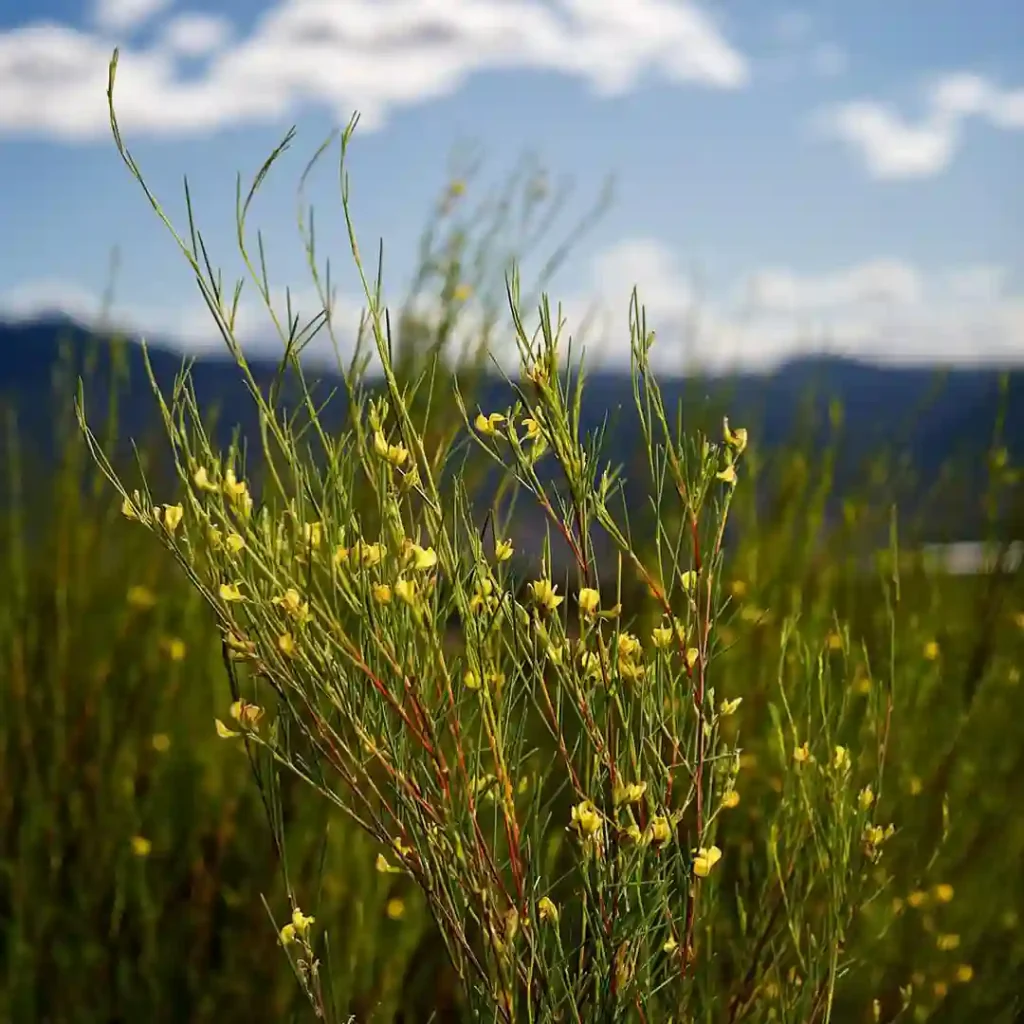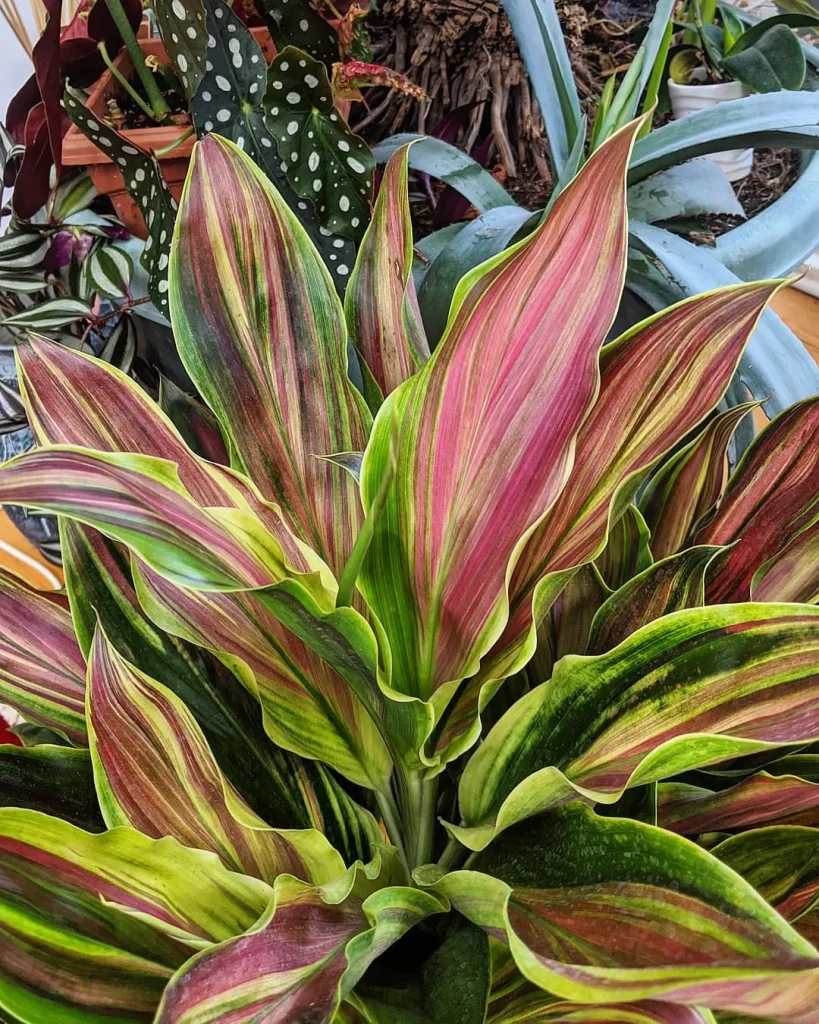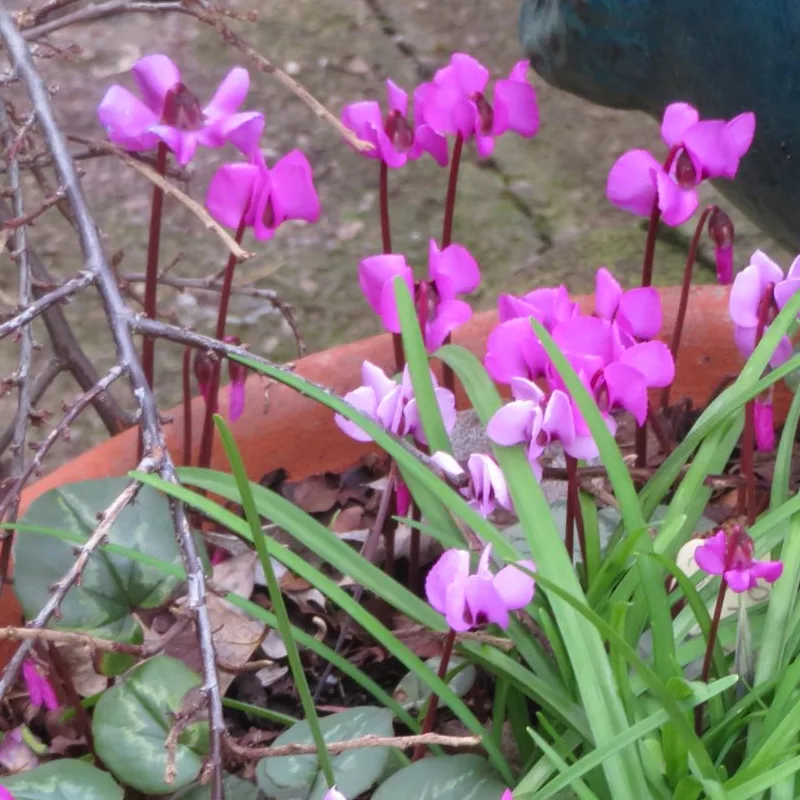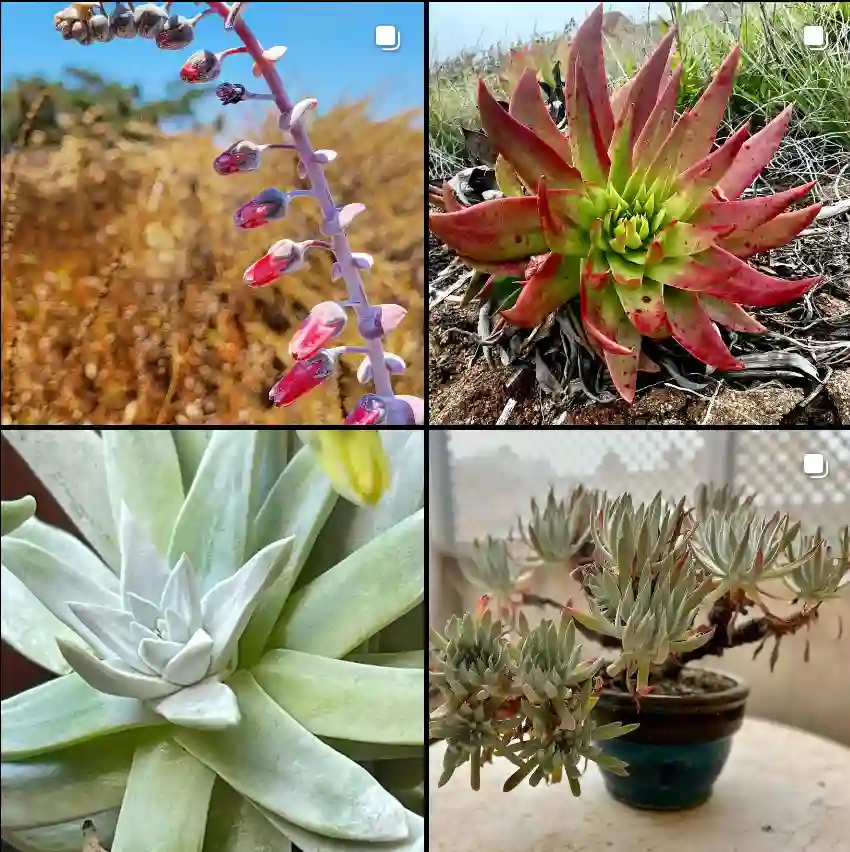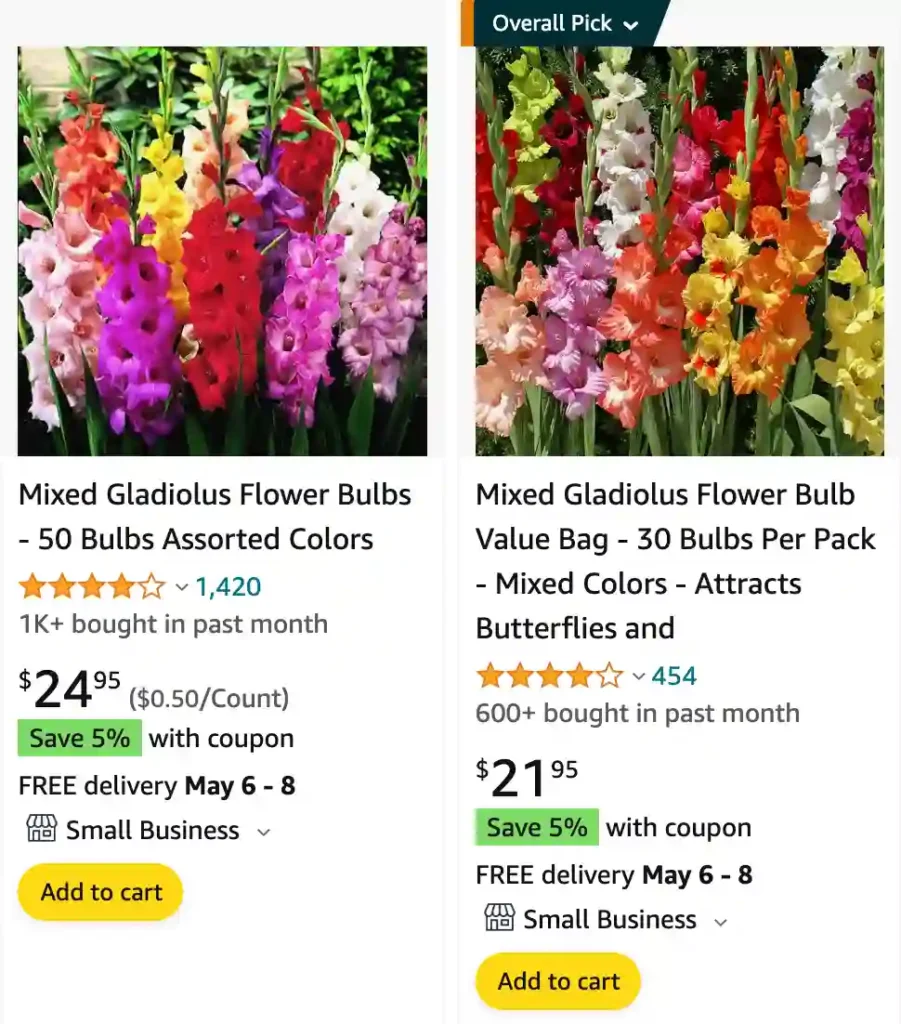
Gladiolus: A Sword-Shaped Bloom
My name is Ferb Vu, and I’ve always been fascinated by the natural world, particularly the diverse and beautiful realm of flora. Among my favorite plant genera is the Gladiolus, a group of flowering plants that boasts striking beauty and a rich history.
The name “Gladiolus” originates from the Latin word “gladius,” meaning “sword,” a fitting name considering the plant’s sword-shaped leaves. This genus belongs to the Iridaceae family, which also includes other popular flowers like irises and crocuses.
A Diverse Genus
The Gladiolus genus is incredibly diverse, with around 300 species originating from Africa, Europe, and the Mediterranean region. These plants are renowned for their tall, slender stems adorned with vibrant, funnel-shaped flowers that bloom in a variety of colors, including red, pink, yellow, orange, purple, and white.
Here are:
- Gladiolus abbreviatus Andrews
- Gladiolus abyssinicus (Brongn. ex Lem.) B.D.Jacks.
- Gladiolus actinomorphanthus P.A.Duvign. & Van Bockstal
- Gladiolus acuminatus F.Bolus
- Gladiolus aequinoctialis Herb.
- Gladiolus aladagensis Eker & Sagiroglu
- Gladiolus alanyensis H.Duman, Sağıroğlu, Tekşen & Karaman
- Gladiolus alatus L.
- Gladiolus albens Goldblatt & J.C.Manning
- Gladiolus amplifolius Goldblatt
- Gladiolus anatolicus (Boiss.) Stapf
- Gladiolus andringitrae Goldblatt
- Gladiolus angustus L.
- Gladiolus antakiensis A.P.Ham.
- Gladiolus antandroyi Goldblatt
- Gladiolus antholyzoides Baker
- Gladiolus appendiculatus G.J.Lewis
- Gladiolus aquamontanus Goldblatt
- Gladiolus arcuatus Klatt
- Gladiolus atropictus Goldblatt & J.C.Manning
- Gladiolus atropurpureus Baker
- Gladiolus atroviolaceus Boiss.
- Gladiolus attilae Kit Tan, B.Mathew & A.Baytop
- Gladiolus aurantiacus Klatt
- Gladiolus aureus Baker
- Gladiolus balensis Goldblatt
- Gladiolus baumii Harms
- Gladiolus bellus C.H.Wright
- Gladiolus benguellensis Baker
- Gladiolus bilineatus G.J.Lewis
- Gladiolus blommesteinii L.Bolus
- Gladiolus bojeri (Baker) Goldblatt
- Gladiolus boranensis Goldblatt
- Gladiolus brachyphyllus F.Bolus
- Gladiolus brevifolius Jacq.
- Gladiolus brevitubus G.J.Lewis
- Gladiolus buckerveldii (L.Bolus) Goldblatt
- Gladiolus bullatus Thunb. ex G.J.Lewis
- Gladiolus × byzantinus Mill.
- Gladiolus caeruleus Goldblatt & J.C.Manning
- Gladiolus calcaratus G.J.Lewis
- Gladiolus calcicola Goldblatt
- Gladiolus canaliculatus Goldblatt
- Gladiolus candidus (Rendle) Goldblatt
- Gladiolus cardinalis Curtis
- Gladiolus carinatus Aiton
- Gladiolus carmineus C.H.Wright
- Gladiolus carneus D.Delaroche
- Gladiolus caryophyllaceus (Burm.f.) Poir.
- Gladiolus cataractarum Oberm.
- Gladiolus caucasicus Herb.
- Gladiolus ceresianus L.Bolus
- Gladiolus chelamontanus Goldblatt
- Gladiolus chevalierianus Marais
- Gladiolus clivorum Goldblatt & J.C.Manning
- Gladiolus communis L.
- Gladiolus comptonii G.J.Lewis
- Gladiolus crassifolius Baker
- Gladiolus crispulatus L.Bolus
- Gladiolus cruentus T.Moore
- Gladiolus cunonius (L.) Gaertn.
- Gladiolus curtifolius Marais
- Gladiolus curtilimbus P.A.Duvign. & Van Bockstal ex S.Córdova
- Gladiolus cylindraceus G.J.Lewis
- Gladiolus dalenii Van Geel
- Gladiolus davisoniae F.Bolus
- Gladiolus debeerstii De Wild.
- Gladiolus debilis Ker Gawl.
- Gladiolus decaryi Goldblatt
- Gladiolus decoratus Baker
- Gladiolus delpierrei Goldblatt
- Gladiolus densiflorus Baker
- Gladiolus deserticola Goldblatt
- Gladiolus dichrous (Bullock) Goldblatt
- Gladiolus diluvialis Goldblatt & J.C.Manning
- Gladiolus dolichosiphon Goldblatt & J.C.Manning
- Gladiolus dolomiticus Oberm.
- Gladiolus dubius Guss.
- Gladiolus dzavakheticus Eristavi
- Gladiolus ecklonii Lehm.
- Gladiolus elliotii Baker
- Gladiolus emiliae L.Bolus
- Gladiolus engysiphon G.J.Lewis
- Gladiolus equitans Thunb.
- Gladiolus erectiflorus Baker
- Gladiolus exalatus Goldblatt & Blittersd.
- Gladiolus exiguus G.J.Lewis
- Gladiolus exilis G.J.Lewis
- Gladiolus fenestratus Goldblatt
- Gladiolus ferrugineus Goldblatt & J.C.Manning
- Gladiolus filiformis Goldblatt & J.C.Manning
- Gladiolus flanaganii Baker
- Gladiolus flavoviridis Goldblatt
- Gladiolus floribundus Jacq.
- Gladiolus fourcadei (L.Bolus) Goldblatt & M.P.de Vos
- Gladiolus gallaecicus Pau ex J.-M.Tison & Girod
- Gladiolus geardii L.Bolus
- Gladiolus goldblattianus Geerinck
- Gladiolus gracilis Jacq.
- Gladiolus gracillimus Baker
- Gladiolus grandiflorus Andrews
- Gladiolus grantii Baker
- Gladiolus gregarius Welw. ex Baker
- Gladiolus griseus Goldblatt & J.C.Manning
- Gladiolus gueinzii Kunze
- Gladiolus gunnisii (Rendle) Marais
- Gladiolus guthriei F.Bolus
- Gladiolus hajastanicus Gabrieljan
- Gladiolus halophilus Boiss. & Heldr.
- Gladiolus hamzaoglui H.Duman, Sagiroglu & Teksen
- Gladiolus harmsianus Vaupel
- Gladiolus hirsutus Jacq.
- Gladiolus hollandii L.Bolus
- Gladiolus horombensis Goldblatt
- Gladiolus huillensis (Welw. ex Baker) Goldblatt
- Gladiolus humilis Stapf
- Gladiolus huttonii (N.E.Br.) Goldblatt & M.P.de Vos
- Gladiolus hyalinus Jacq.
- Gladiolus illyricus W.D.J.Koch
- Gladiolus imbricatus L.
- Gladiolus inandensis Baker
- Gladiolus inarimensis Guss.
- Gladiolus inflatus (Thunb.) Thunb.
- Gladiolus inflexus Goldblatt & J.C.Manning
- Gladiolus insolens Goldblatt & J.C.Manning
- Gladiolus intonsus Goldblatt
- Gladiolus involutus D.Delaroche
- Gladiolus iroensis (A.Chev.) Marais
- Gladiolus italicus Mill.
- Gladiolus izzet-baysalii Eker & Sagiroglu
- Gladiolus jonquilodorus Eckl. ex G.J.Lewis
- Gladiolus juncifolius Goldblatt
- Gladiolus kamiesbergensis G.J.Lewis
- Gladiolus karooicus Goldblatt & J.C.Manning
- Gladiolus kotschyanus Boiss.
- Gladiolus lapeirousioides Goldblatt
- Gladiolus laxiflorus Baker
- Gladiolus ledoctei P.A.Duvign. & Van Bockstal
- Gladiolus leonensis Marais
- Gladiolus leptosiphon F.Bolus
- Gladiolus × lewisiae Oberm.
- Gladiolus liliaceus Houtt.
- Gladiolus linearifolius Vaupel
- Gladiolus lithicola Goldblatt
- Gladiolus longicollis Baker
- Gladiolus longispathaceus Cufod.
- Gladiolus loteniensis Hilliard & B.L.Burtt
- Gladiolus lundaensis Goldblatt
- Gladiolus luteus Lam.
- Gladiolus macneilii Oberm.
- Gladiolus maculatus Sweet
- Gladiolus magnificus (Harms) Goldblatt
- Gladiolus malvinus Goldblatt & J.C.Manning
- Gladiolus manikaensis Goldblatt
- Gladiolus mariae Burgt
- Gladiolus marlothii G.J.Lewis
- Gladiolus martleyi L.Bolus
- Gladiolus meliusculus (G.J.Lewis) Goldblatt & J.C.Manning
- Gladiolus melleri Baker
- Gladiolus menitskyi Gabrieljan
- Gladiolus mensensis (Schweinf.) Goldblatt
- Gladiolus merianellus (L.) Thunb.
- Gladiolus meridionalis G.J.Lewis
- Gladiolus metallicola Goldblatt
- Gladiolus micranthus Stapf
- Gladiolus microcarpus G.J.Lewis
- Gladiolus microspicatus P.A.Duvign. & Van Bockstal ex S.Córdova
- Gladiolus miniatus Eckl.
- Gladiolus mirus Vaupel
- Gladiolus monticola Goldblatt & J.C.Manning
- Gladiolus mortonius Herb.
- Gladiolus mosambicensis Baker
- Gladiolus mostertiae L.Bolus
- Gladiolus muenzneri Vaupel
- Gladiolus murgusicus Mikheev
- Gladiolus murielae Kelway
- Gladiolus mutabilis G.J.Lewis
- Gladiolus negeliensis Goldblatt
- Gladiolus nerineoides G.J.Lewis
- Gladiolus nigromontanus Goldblatt
- Gladiolus numidicus Jord.
- Gladiolus nyasicus Goldblatt
- Gladiolus oatesii Rolfe
- Gladiolus ochroleucus Baker
- Gladiolus oliganthus Baker
- Gladiolus oligophlebius Baker
- Gladiolus oppositiflorus Herb.
- Gladiolus orchidiflorus Andrews
- Gladiolus oreocharis Schltr.
- Gladiolus ornatus Klatt
- Gladiolus osmaniyensis Sagiroglu
- Gladiolus overbergensis Goldblatt & M.P.de Vos
- Gladiolus paludosus Baker
- Gladiolus palustris Gaudin
- Gladiolus papilio Hook.f.
- Gladiolus pappei Baker
- Gladiolus pardalinus Goldblatt & J.C.Manning
- Gladiolus parvulus Schltr.
- Gladiolus patersoniae F.Bolus
- Gladiolus pauciflorus Baker ex Oliv.
- Gladiolus pavonia Goldblatt & J.C.Manning
- Gladiolus permeabilis D.Delaroche
- Gladiolus perrieri Goldblatt
- Gladiolus persicus Boiss.
- Gladiolus phoenix Goldblatt & J.C.Manning
- Gladiolus pole-evansii I.Verd.
- Gladiolus praecostatus Marais
- Gladiolus pretoriensis Kuntze
- Gladiolus priorii (N.E.Br.) Goldblatt & M.P.de Vos
- Gladiolus pritzelii Diels
- Gladiolus puberulus Vaupel
- Gladiolus pubigerus G.J.Lewis
- Gladiolus pulcherrimus (G.J.Lewis) Goldblatt & J.C.Manning
- Gladiolus pungens P.A.Duvign. & Van Bockstal ex S.Córdova
- Gladiolus pusillus Goldblatt
- Gladiolus quadrangularis (Burm.f.) Aiton
- Gladiolus quadrangulus (D.Delaroche) Barnard
- Gladiolus recurvus L.
- Gladiolus reginae Goldblatt & J.C.Manning
- Gladiolus rehmannii Baker
- Gladiolus rhodanthus J.C.Manning & Goldblatt
- Gladiolus richardsiae Goldblatt
- Gladiolus robertsoniae F.Bolus
- Gladiolus robiliartianus P.A.Duvign.
- Gladiolus rogersii Baker
- Gladiolus roseolus Chiov.
- Gladiolus roseovenosus Goldblatt & J.C.Manning
- Gladiolus rubellus Goldblatt
- Gladiolus rudis Licht. ex Roem. & Schult.
- Gladiolus rufomarginatus G.J.Lewis
- Gladiolus rupicola Vaupel
- Gladiolus saccatus (Klatt) Goldblatt & M.P.de Vos
- Gladiolus salmoneicolor P.A.Duvign. & Van Bockstal ex S.Córdova
- Gladiolus salteri G.J.Lewis
- Gladiolus saundersii Hook.f.
- Gladiolus saxatilis Goldblatt & J.C.Manning
- Gladiolus scabridus Goldblatt & J.C.Manning
- Gladiolus schweinfurthii (Baker) Goldblatt & M.P.de Vos
- Gladiolus scullyi Baker
- Gladiolus sekukuniensis P.J.D.Winter
- Gladiolus sempervirens G.J.Lewis
- Gladiolus serapiiflorus Goldblatt
- Gladiolus serenjensis Goldblatt
- Gladiolus sericeovillosus Hook.f.
- Gladiolus serpenticola Goldblatt & J.C.Manning
- Gladiolus siirtensis Pınar, Eroğlu & Fidan
- Gladiolus somalensis Goldblatt & Thulin
- Gladiolus speciosus Thunb.
- Gladiolus splendens (Sweet) Herb.
- Gladiolus stefaniae Oberm.
- Gladiolus stellatus G.J.Lewis
- Gladiolus stenolobus Goldblatt
- Gladiolus stenosiphon Goldblatt
- Gladiolus stokoei G.J.Lewis
- Gladiolus subcaeruleus G.J.Lewis
- Gladiolus sudanicus Goldblatt
- Gladiolus sufflavus (G.J.Lewis) Goldblatt & J.C.Manning
- Gladiolus sulculatus Goldblatt
- Gladiolus × sulistrovicus Kaminski, Szczep. & Cieslak
- Gladiolus symonsii F.Bolus
- Gladiolus szovitsii Grossh.
- Gladiolus taubertianus Schltr.
- Gladiolus tenuis M.Bieb.
- Gladiolus teretifolius Goldblatt & M.P.de Vos
- Gladiolus trichonemifolius Ker Gawl.
- Gladiolus triphyllus (Sm.) Ker Gawl.
- Gladiolus tristis L.
- Gladiolus tshombeanus P.A.Duvign. & Van Bockstal
- Gladiolus uitenhagensis Goldblatt & Vlok
- Gladiolus undulatus L.
- Gladiolus unguiculatus Baker
- Gladiolus usambarensis Marais ex Goldblatt
- Gladiolus uysiae L.Bolus ex G.J.Lewis
- Gladiolus vaginatus F.Bolus
- Gladiolus vandermerwei (L.Bolus) Goldblatt & M.P.de Vos
- Gladiolus variegatus (G.J.Lewis) Goldblatt & J.C.Manning
- Gladiolus varius F.Bolus
- Gladiolus velutinus De Wild.
- Gladiolus venustus G.J.Lewis
- Gladiolus verdickii De Wild. & T.Durand
- Gladiolus vernus Oberm.
- Gladiolus vexillare Martelli
- Gladiolus vigilans Barnard
- Gladiolus vinosomaculatus Kies
- Gladiolus violaceolineatus G.J.Lewis
- Gladiolus virescens Thunb.
- Gladiolus virgatus Goldblatt & J.C.Manning
- Gladiolus virgineus Goldblatt & J.C.Manning
- Gladiolus viridiflorus G.J.Lewis
- Gladiolus watermeyeri L.Bolus
- Gladiolus watsonioides Baker
- Gladiolus watsonius Thunb.
- Gladiolus wilsonii (Baker) Goldblatt & J.C.Manning
- Gladiolus woodii Baker
- Gladiolus zambesiacus Baker
- Gladiolus zimbabweensis Goldblatt
Are gladiolus poisonous to dogs?
Absolutely! I learned this the hard way a few years back. My neighbor, Mrs. Hernandez, had these beautiful gladiolus growing in her front yard, and my pup, Charlie, is a notorious sniffer. One day, I wasn’t paying close enough attention, and Charlie managed to snag a mouthful of a gladiolus leaf. Luckily, I noticed right away and called the vet in a panic. Thankfully, Charlie only ended up with a bit of drooling and diarrhea, but it was a scary experience. Ever since then, I’m super cautious about what plants I have in my yard and keep a close eye on Charlie during walks.
How to store gladiolus bulbs?
Putting away my gladiolus bulbs every fall is like tucking away summer sunshine for next year. Here’s what works for me. After the first frost hits and the foliage browns, I carefully dig up the corms. I let them dry out on a tarp in a shaded spot for a day or two. Then, I separate the cormels (the little baby corms) and toss any that look shriveled or rotten. The good-sized corms go into a cardboard box lined with newspaper. I spread them out in a single layer, making sure none are touching, and then add another layer of newspaper on top. The key is finding a cool, dry spot for storage. My basement usually hovers around a perfect 40 degrees Fahrenheit, which is ideal. But a friend of mine swears by using the crisper drawer in her fridge! Wherever you choose, just make sure it’s protected from freezing temperatures and gets good air circulation. That way, my gladiolus come back strong and ready to bloom again next year.
Are gladiolus deer resistant?
They aren’t exactly Fort Knox, but deer don’t seem to be a huge fan of my gladiolus. Most years, the flowers stand tall and proud all summer. There have been a couple of times though, during really harsh winters with little natural food, that a hungry deer has taken a nibble at the foliage. It wasn’t a complete disaster, though – the deer mostly left the flower stalks alone and the plant itself bounced back just fine. So, I’d say they’re somewhat deer resistant, but if you live in an area with a lot of deer or especially determined ones, you might want to consider planting some stronger deterrents alongside your gladiolus.
Are gladiolus poisonous to cats?
Oh boy, are gladiolus ever! Those pretty flowers turn into real troublemakers if a curious kitty gets ahold of them. I learned that the hard way a few years ago. I had a beautiful vase of gladiolus on the coffee table, and Cleo, my mischievous cat, decided it looked like a climbing challenge. Before I knew it, she’d knocked the vase over and was batting at the petals. Luckily, I caught her right away and managed to keep her from getting a mouthful. It sent me scrambling to the internet to find out how dangerous they could be, and let me tell you, it was a stressful afternoon! Since then, gladiolus are off-limits for any indoor displays if Cleo’s going to be around. It’s just not worth the risk.
What do gladiolus represent?
Gladiolus have all sorts of meanings, depending on who you ask and the colors you choose. For me, they mostly represent summer strength. Those tall, straight stalks with the vibrant blooms just seem to stand up so proudly, no matter how hot the sun gets. They remind me of enduring the summer heat while weeding the garden or running errands. But they also have a bit of a fancy side, you know? Like they wouldn’t be out of place in a summer wedding bouquet. Maybe that’s why they’re the flower for the 40th wedding anniversary – a celebration of lasting love that’s still full of life!
How to stake gladiolus?
Staking my gladiolus is like giving them a friendly helping hand to reach for the sunshine. Here’s what works for me:
First, I wait until the plants are about a foot tall before staking. This way, I avoid accidentally poking the corms (the bulbs) when I push the stakes in. I use bamboo stakes – they’re sturdy and easy to find at most garden centers.
Next, I gently push the stake into the ground a few inches away from the stem. You want to give the plant some wiggle room as it grows. Then, I use soft garden twine to loosely tie the stem to the stake. I make a simple loop around the stem, avoiding any knots that might damage the plant. As the flower stalk gets taller, I add more ties loosely up the stem, especially around the developing flower head, which can get heavy and flop over.
Some folks like to create a cage of stakes and twine around a whole clump of gladiolus. I haven’t tried that myself, but it seems like a good option if you’re planting a lot of bulbs close together. The important thing is to be gentle and provide support without restricting the plant’s growth. With a little help, your gladiolus will stand tall and proud all summer long!
Do hummingbirds like gladiolus?
You bet they do! My gladiolus are like a little hummingbird hotel every summer. The bright colors, especially reds, oranges, and pinks, are real hummingbird magnets. It’s amazing to watch them hover in mid-air, their wings buzzing like tiny helicopters, as they sip nectar from the blooms. The shape of the gladiolus flower, with its long, tubular throat, is perfect for their long beaks. Sometimes I see a couple of them flitting around the flowers, fighting over who gets the tastiest nectar! It’s a delightful show and makes all the effort of planting and caring for the gladiolus worthwhile.
Do i cut gladiolus down after flowering?
You don’t have to cut down the entire gladiolus plant after flowering, but there are some steps you should take to encourage healthy growth for next year’s blooms. Here’s what I do:
- Leave the leaves: Resist the urge to trim away the foliage after the flowers fade. Those green leaves are busy photosynthesizing, creating energy that gets stored in the corm (the bulb underground) for next year’s flowers. Let the leaves die back naturally over fall.
- Cut the flower stalk: Once all the blooms on a stalk have finished, you can cut the stalk down to the ground with sharp pruners. This tidies up the plant’s appearance and prevents the stalk from putting energy into seed production.
- Dig up the corms (optional): In colder climates, you can dig up the corms after the first frost hits and the leaves have died back. This protects them from freezing temperatures. But if you live in a mild climate, you can leave the corms in the ground over winter with a layer of mulch for protection.
So, you can cut down the flower stalk, but definitely leave the leaves for a while to nourish the corm for next year’s show!
Can gladiolus grow in pots?
Absolutely! Gladiolus are actually a great choice for container gardening. In fact, there are a few reasons why pots might be the perfect place for them:
- Drainage control: Gladiolus prefer well-draining soil, and pots with drainage holes allow for excess water to escape, preventing the corms from rotting.
- Limited space: No sprawling garden? No problem! Gladiolus don’t need a ton of width in a pot, just depth to accommodate their corms.
- Mobility: Want to enjoy their vibrant blooms on your patio or balcony? Pots allow you to easily move your gladiolus around to catch the most sun.
Here are some things to keep in mind for planting gladiolus in pots:
- Pot size: Choose a pot that’s at least 12 inches deep to give the corms enough room to grow.
- Sunlight: Gladiolus love sunshine, so pick a spot in your container garden that gets at least 6 hours a day.
- Staking: Taller varieties may need staking for support, especially when the blooms open.
Does gladiolus have seeds?
Yes, gladiolus can produce seeds, but it’s not the most common way gardeners propagate them. Here’s the deal:
- They seed, but slowly: Gladiolus will develop seed pods after the flowers finish blooming. These pods take a while to mature and dry out completely.
- Not guaranteed blooms: Even if you collect seeds and plant them carefully, it can take several years for those seedlings to mature enough to produce flowers.
- Corms are faster: Most gardeners opt to grow gladiolus from corms (the underground bulbs). This is a much faster and more reliable way to get blooms the following season. You can simply save some healthy corms after digging them up in the fall and replant them in the spring.
How long do gladiolus last in a vase?
With a little TLC, you can enjoy your gorgeous gladiolus in a vase for a good long while! Here’s what I’ve found:
If you buy them with just a few blooms open and follow some simple care tips, you can expect them to last anywhere from a week to up to ten days. The key is to mimic the conditions they love in the garden:
- Fresh cut: When you bring your gladiolus home, give the stems a fresh cut at an angle with sharp pruners. This helps them absorb water more easily.
- Clean vase: Use a clean vase and fill it with cool water. Warm water encourages bacteria growth, which can shorten the lifespan of your flowers.
- Leaf removal: Remove any leaves that will be below the water line in the vase. Submerged leaves can rot and spread bacteria.
- Sugar boost: A sprinkle of sugar or a few drops of clear soda in the water can give your gladiolus a bit of extra energy to keep blooming.
- Location, location: Keep your vase out of direct sunlight and away from heat sources like vents or stoves. This helps the flowers stay hydrated for longer.
- Stem refresh: Every few days, recut the stems at an angle and replace the water in the vase. This removes any built-up bacteria and gives the flowers a fresh drink.
Do squirrels eat gladiolus bulbs?
Absolutely! Those furry little bandits seem to have a real taste for my gladiolus bulbs. Last fall, I planted a row of beautiful red ones, dreaming of summer blooms. But come spring, most of the bulbs were gone! I even saw a squirrel with dirt on its nose darting up a tree one day, leaving a suspicious hole right where a bulb used to be. It’s gotten to the point where I almost hesitate to plant them anymore, unless I can find a way to outsmart those sneaky squirrels.
How deep should gladiolus bulbs be planted?
The depth for planting gladiolus bulbs depends on their size, and I’ve learned this the hard way! For my bigger bulbs, I usually aim for around 4 to 6 inches deep. That seems to be the sweet spot – deep enough to anchor the plant for the tall stalk and those impressive blooms, but not so deep that it takes them forever to sprout. Last year, I experimented with planting a few smaller ones a bit shallower, around 3 inches, and they actually did alright. But the bigger ones definitely produced the showier flowers. I guess it’s all about finding that happy medium between giving them enough room to grow and keeping them protected underground.
How to store gladiolus bulbs for winter?
Storing gladiolus bulbs over winter is a delicate dance between keeping them cool and dry, but not so cold they freeze. Last year, I tried leaving them in the ground a bit too long, hoping to stretch out the season. Big mistake! We had an early frost and by spring, most of the bulbs were mushy messes. Now, I dig them up after the first frost hits and the foliage browns. I let them dry out in a warm, airy spot for a few days, like on a screen in the garage. Then, I place them in a cardboard box with some shredded paper or peat moss for cushioning. The key is finding a cool, dark spot for them to sleep over winter. My basement seems to do the trick, but an unheated garage or even the crisper drawer in the fridge (in a mesh bag, not plastic!) can work too. Just be sure to check on them every now and then and mist them if they start to look shriveled. With a little care, those bulbs will be ready to put on a spectacular show again next summer!
If i die, water my plants!
